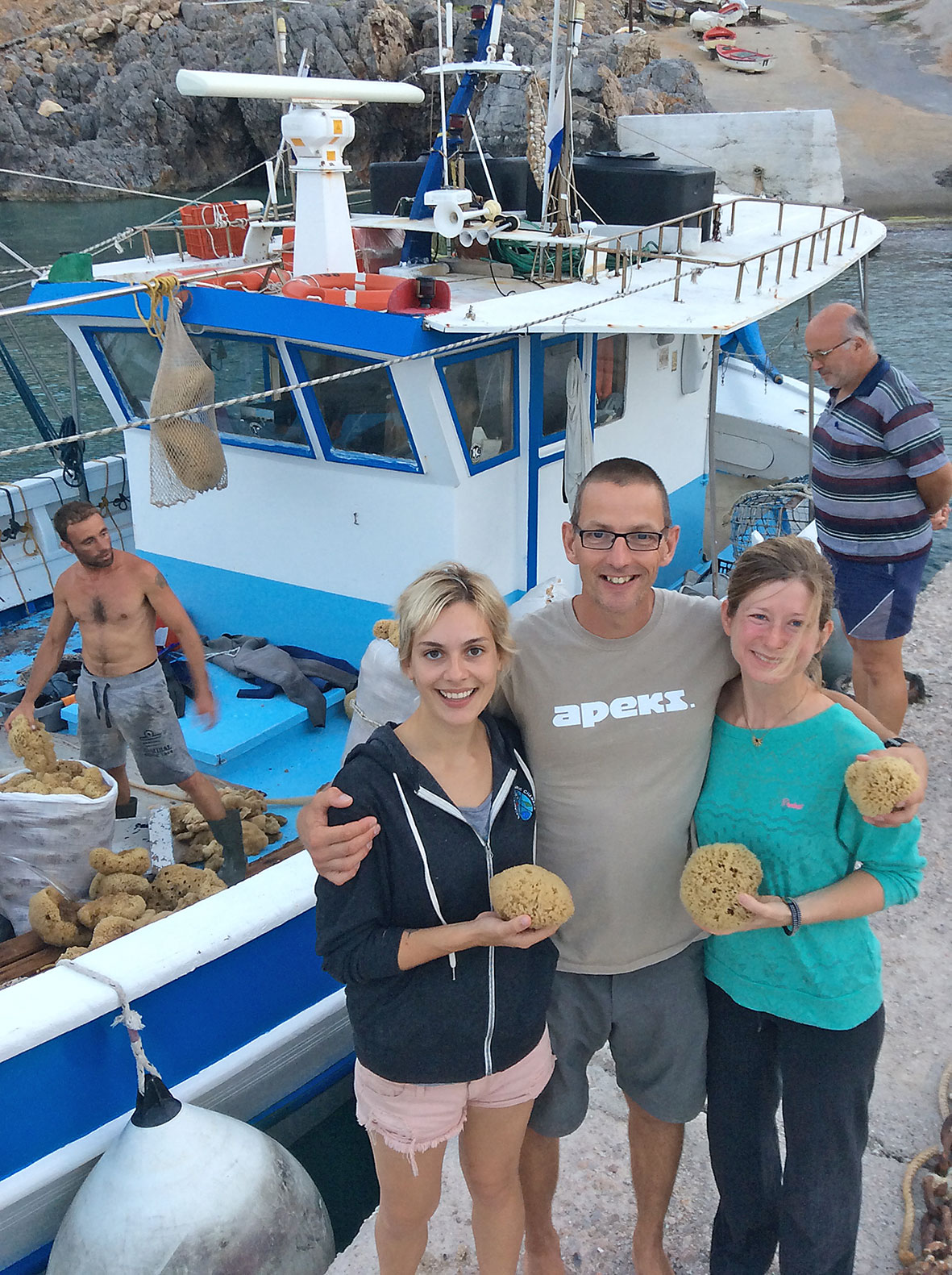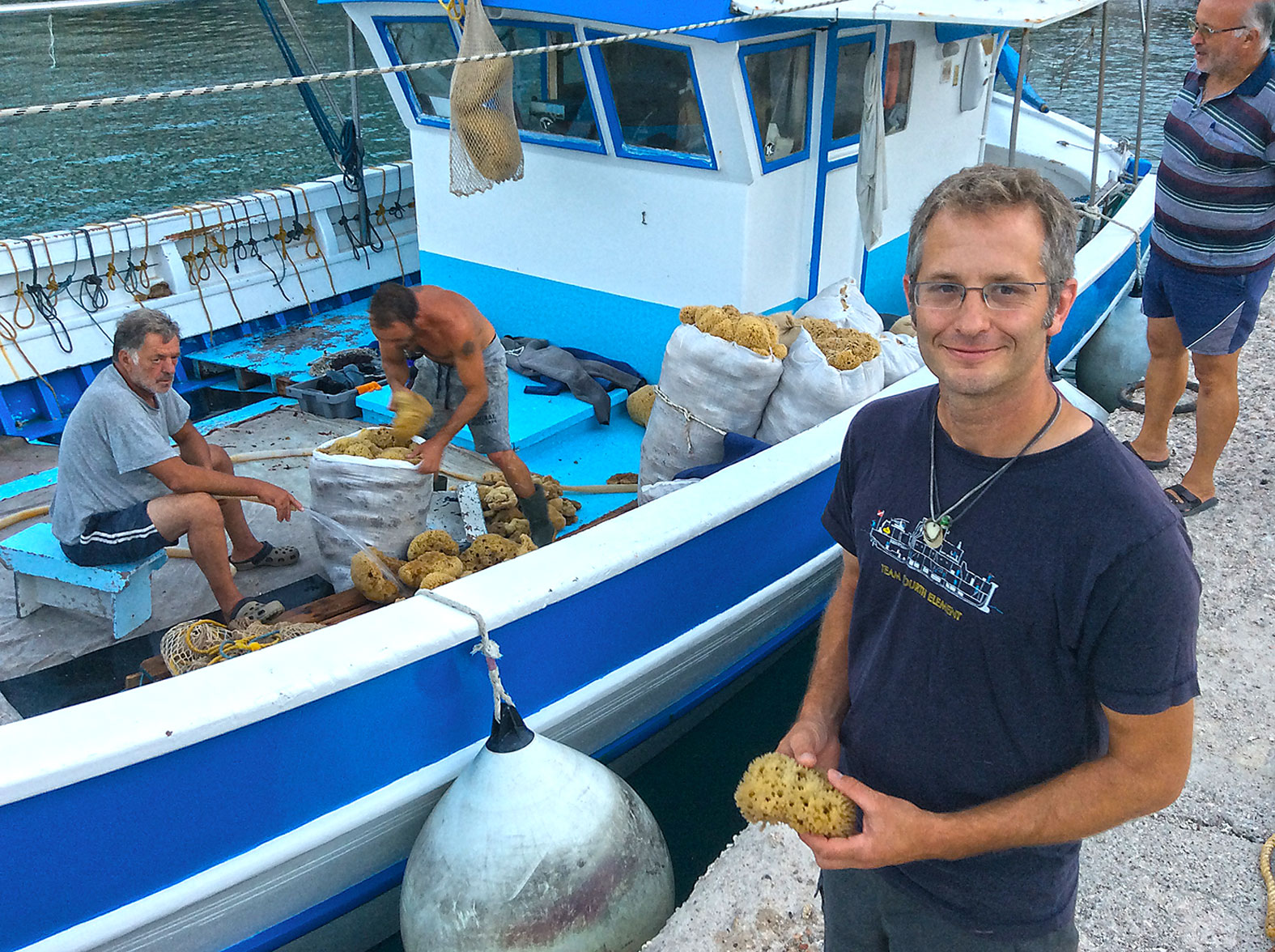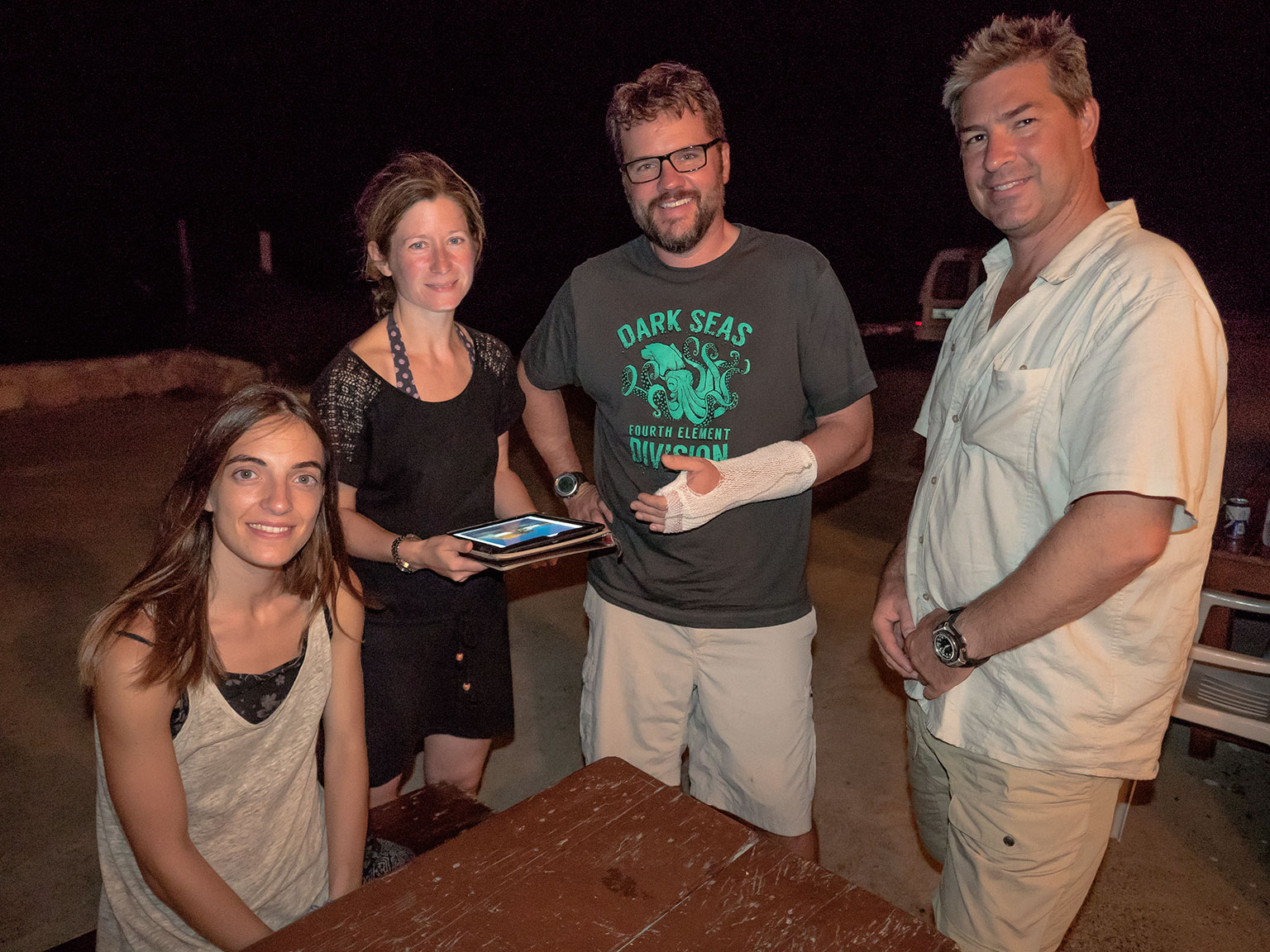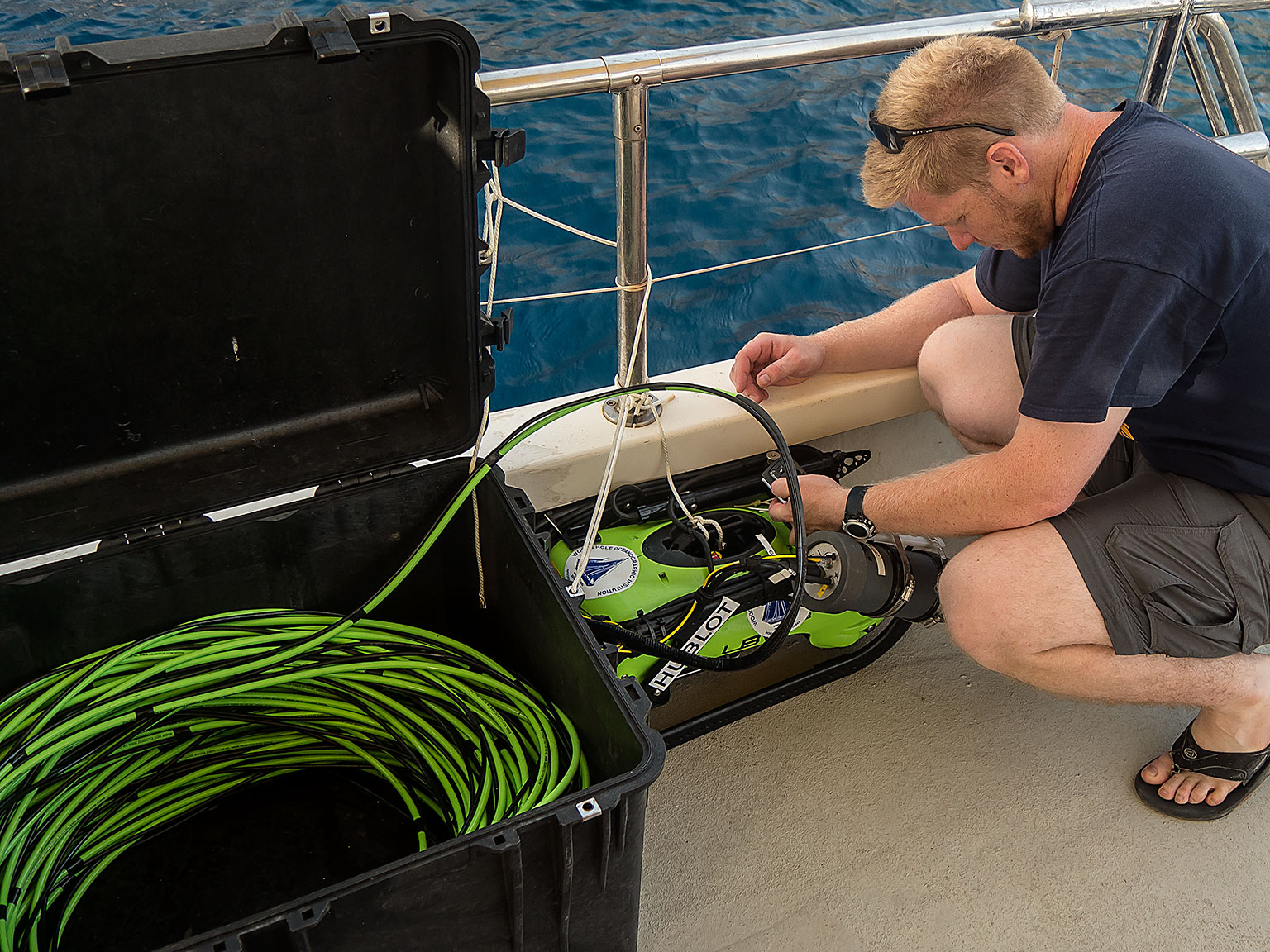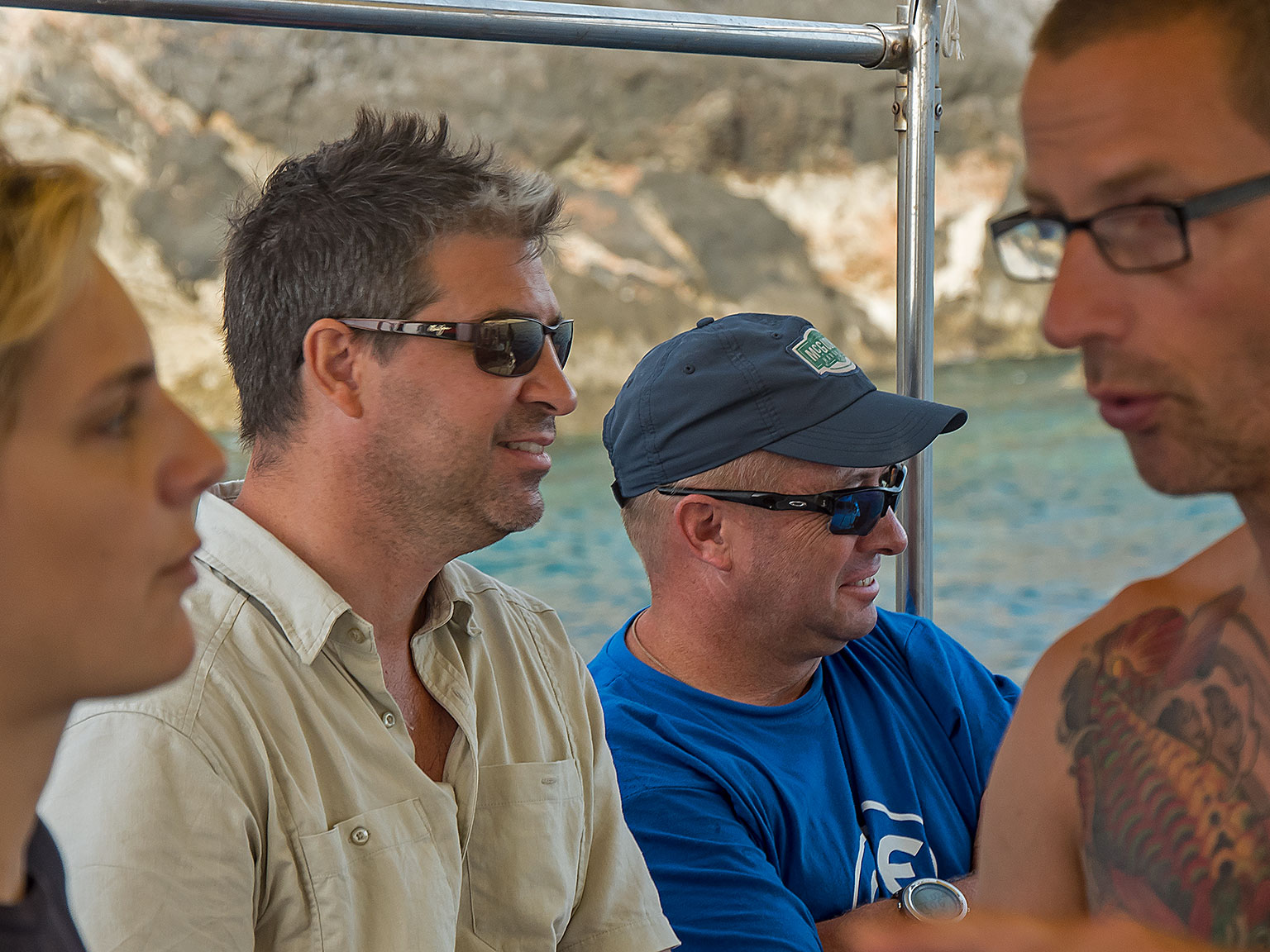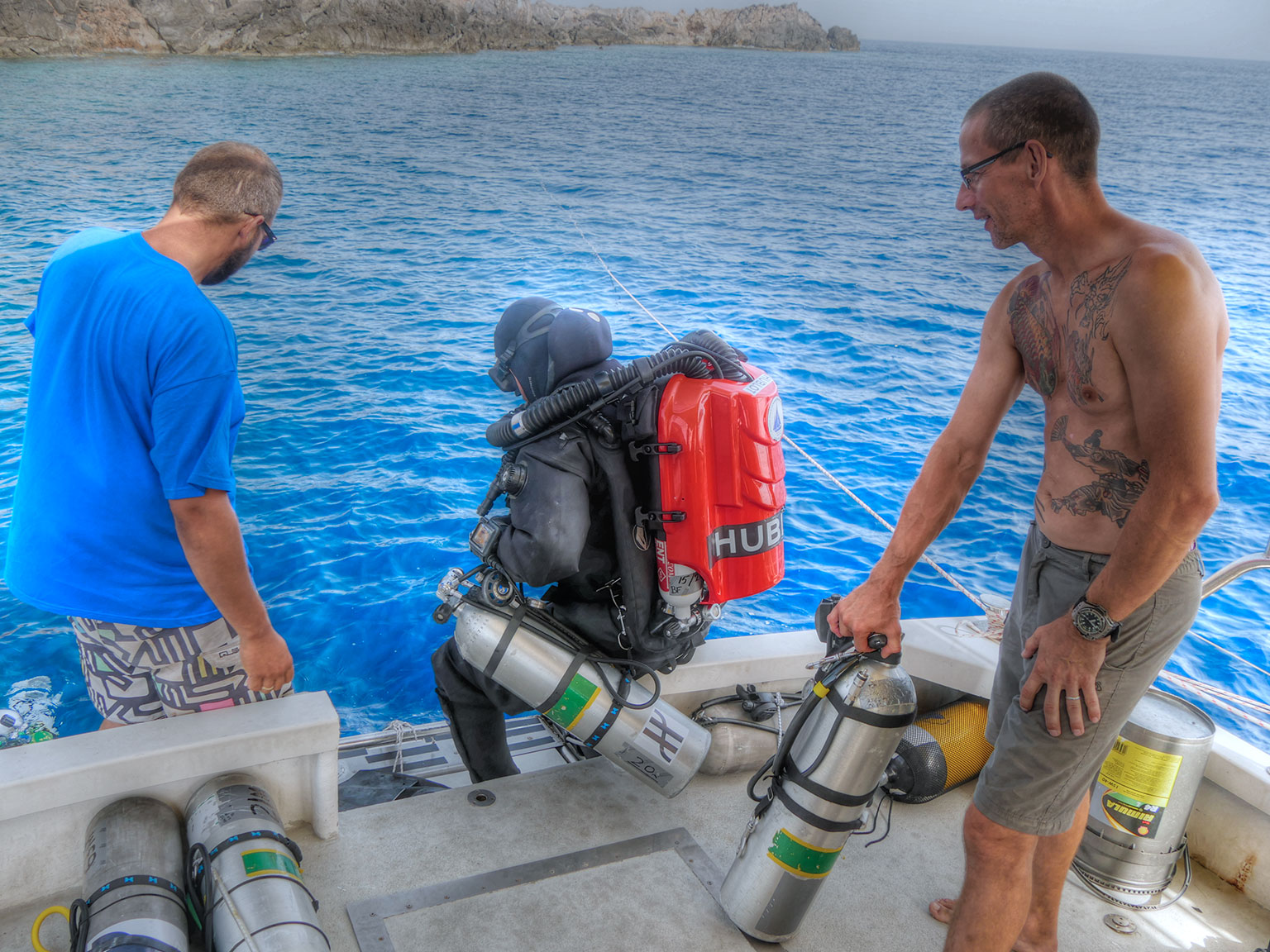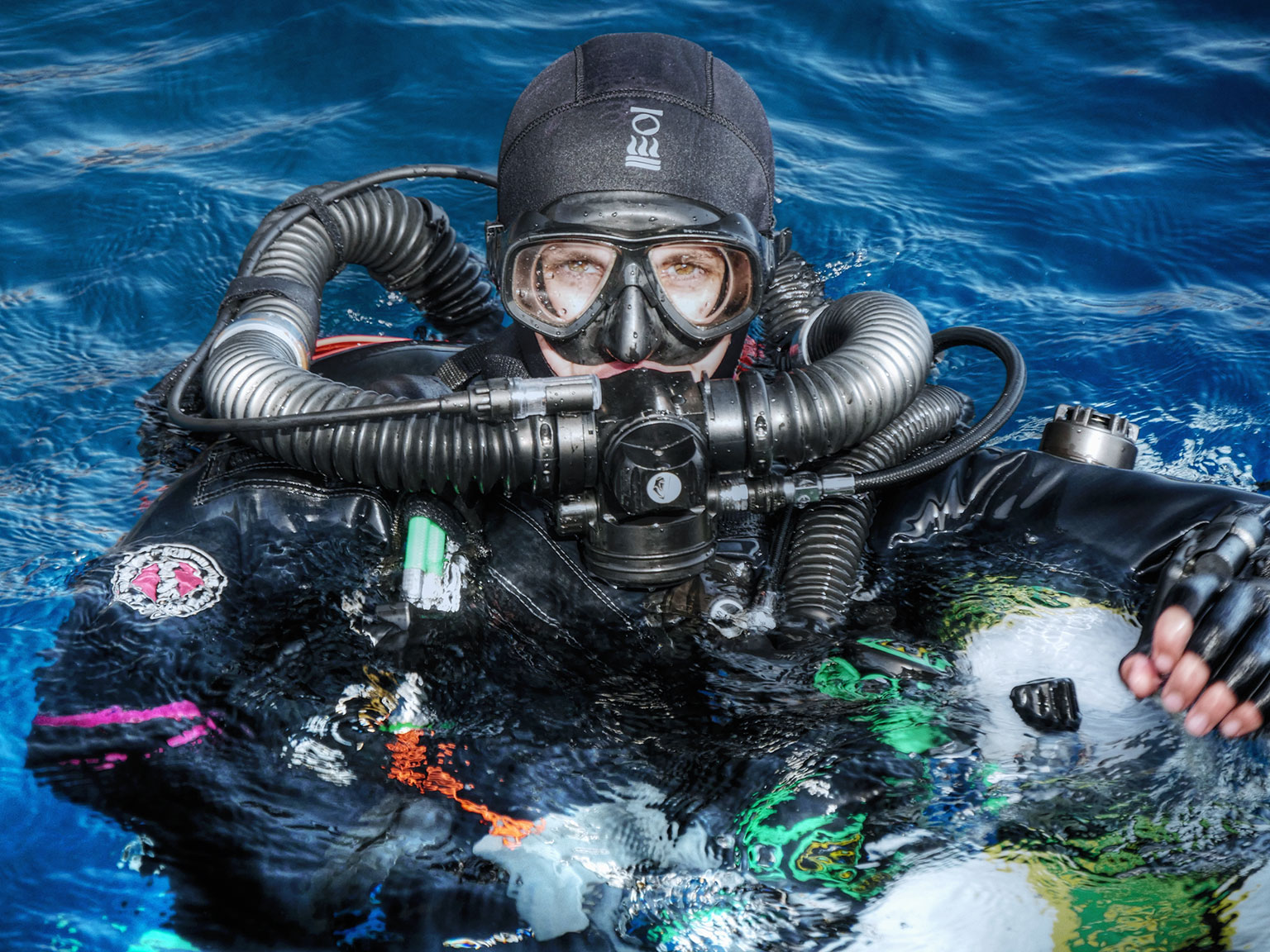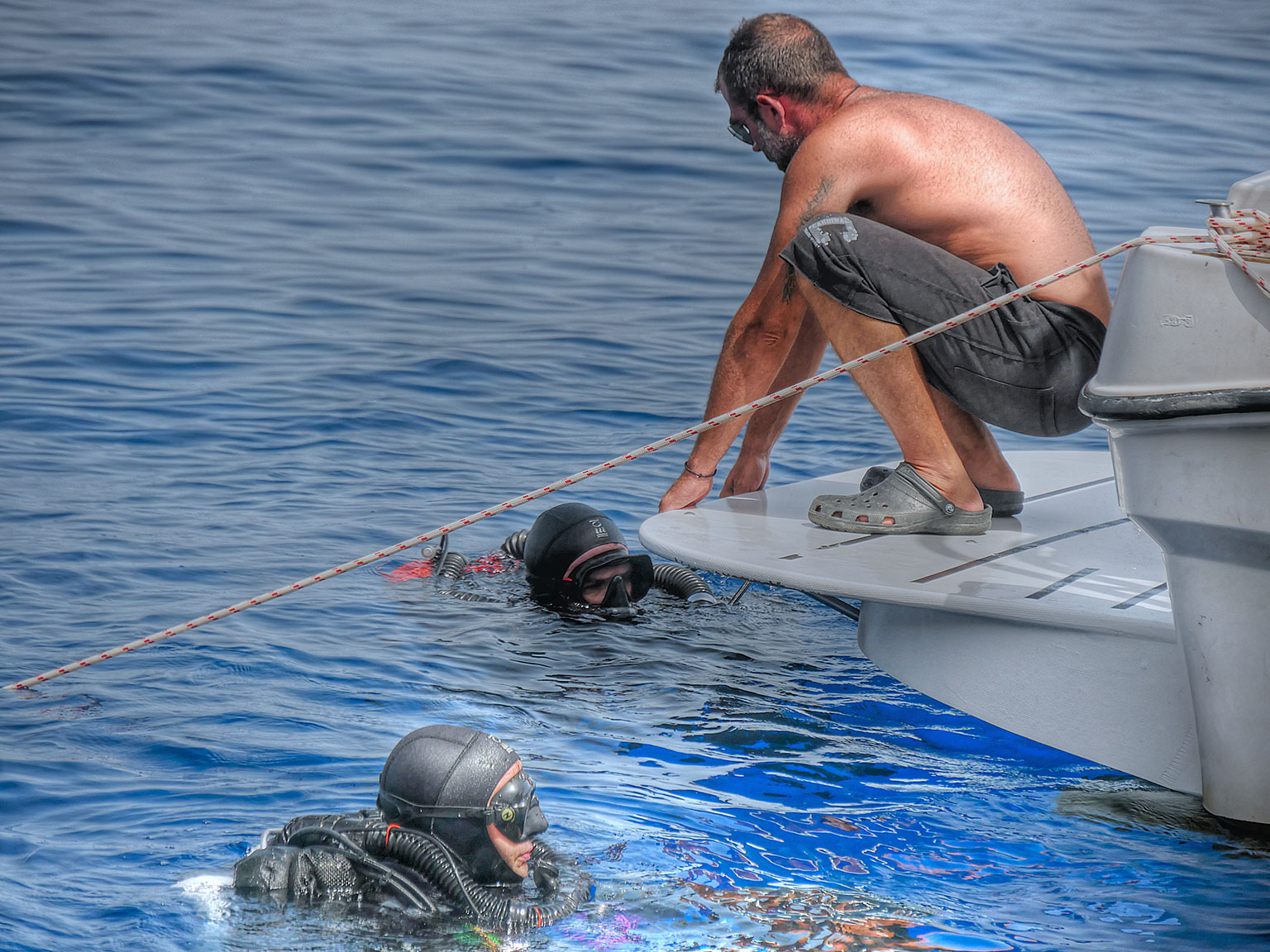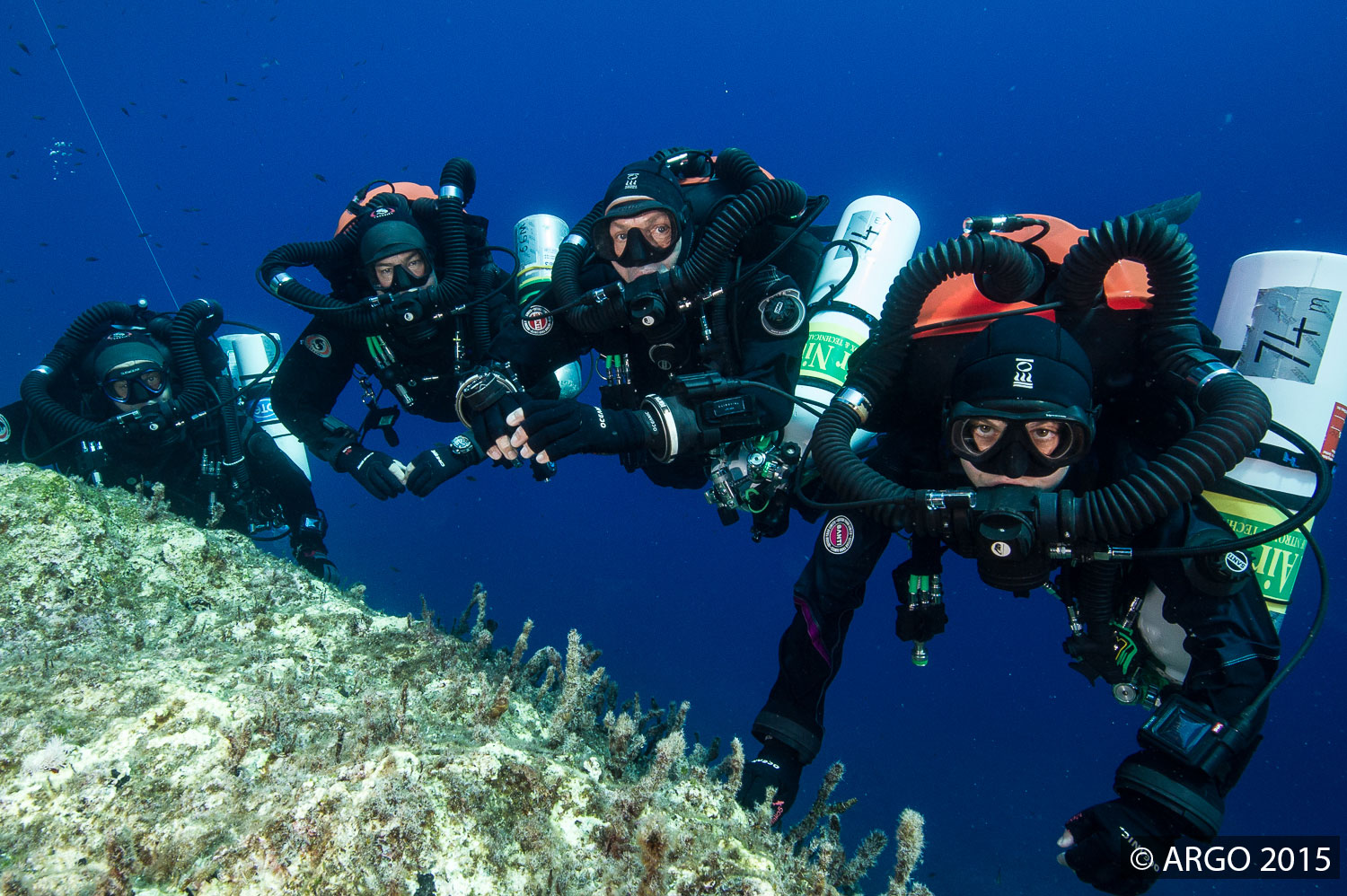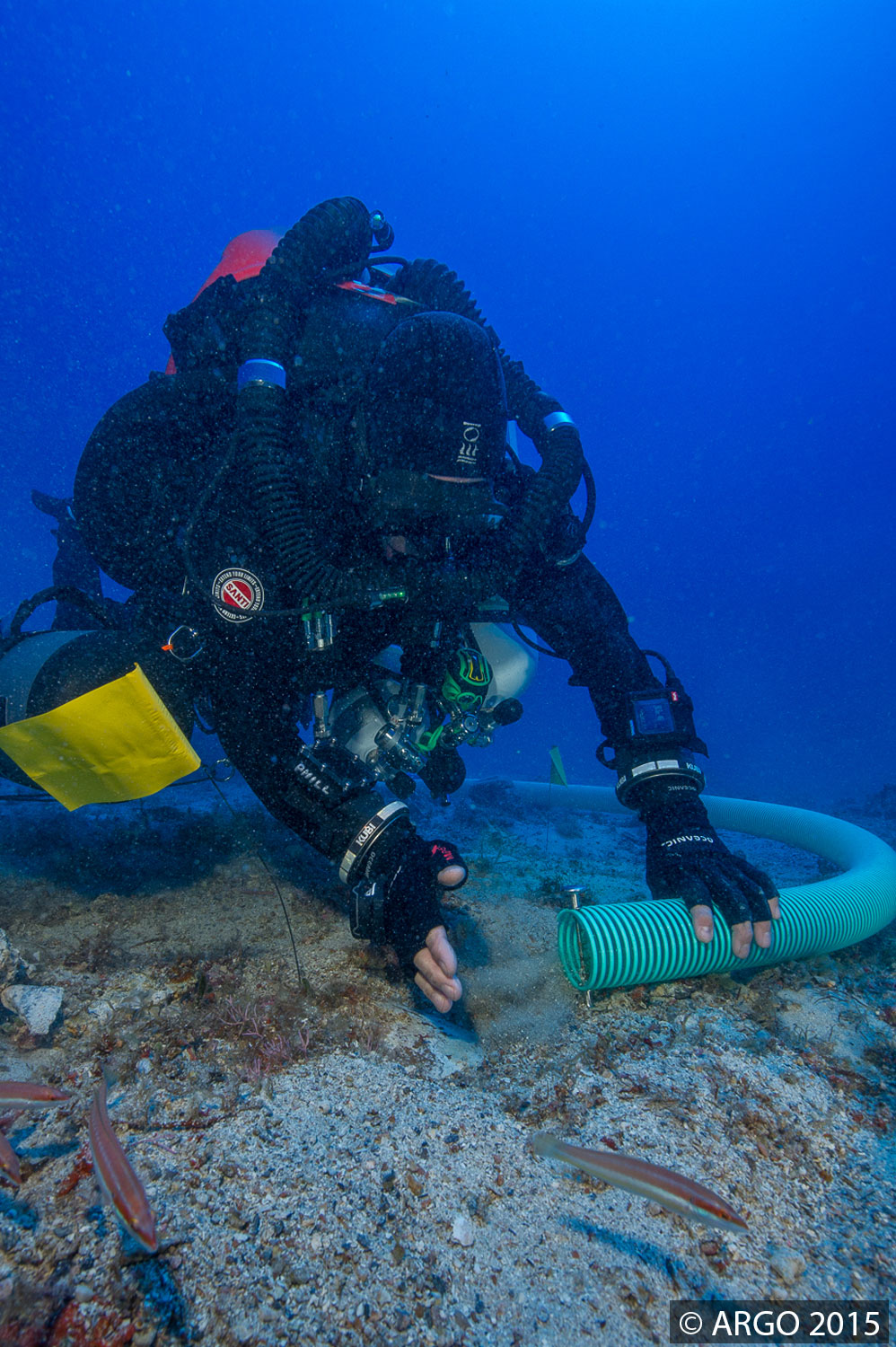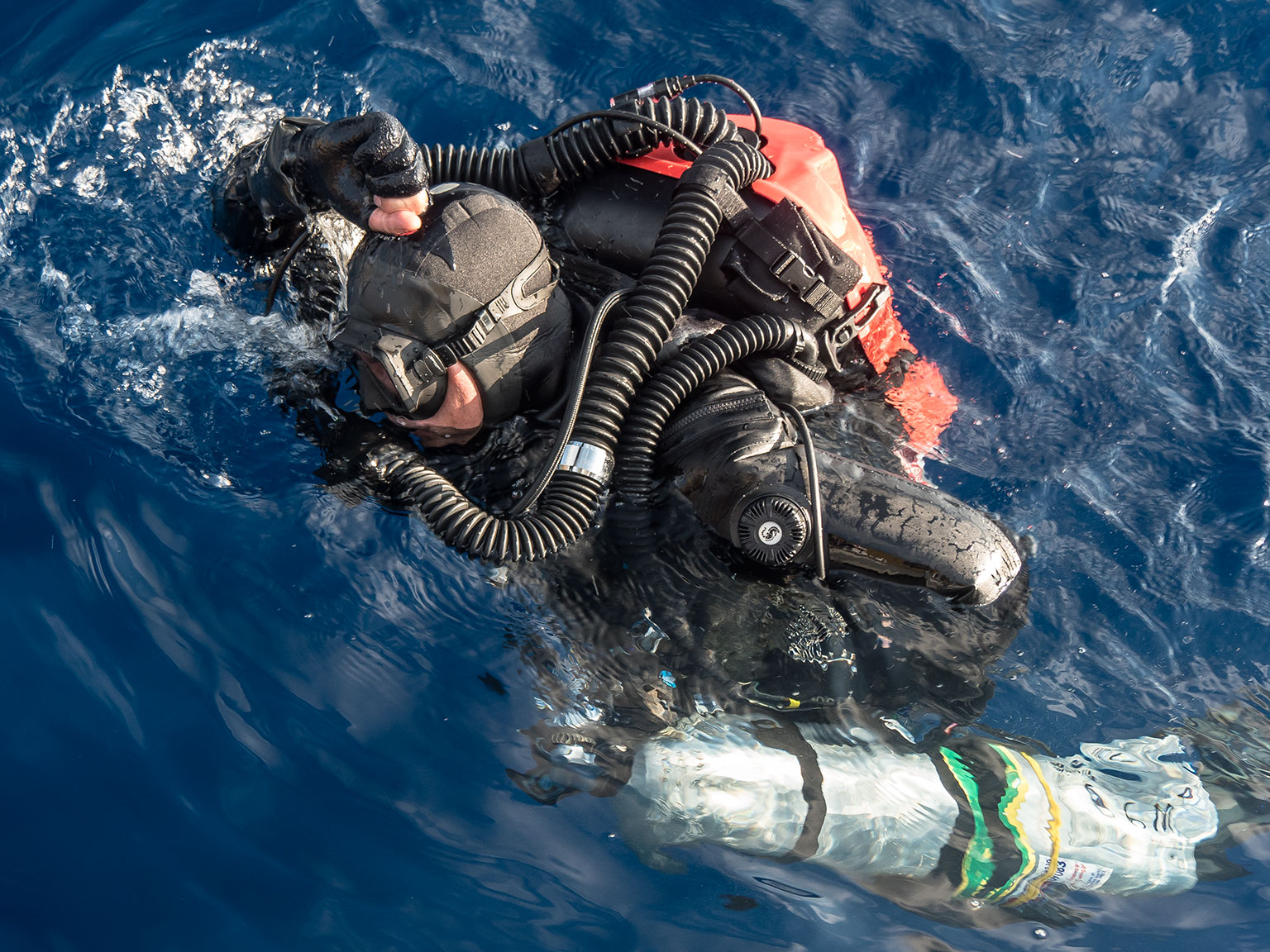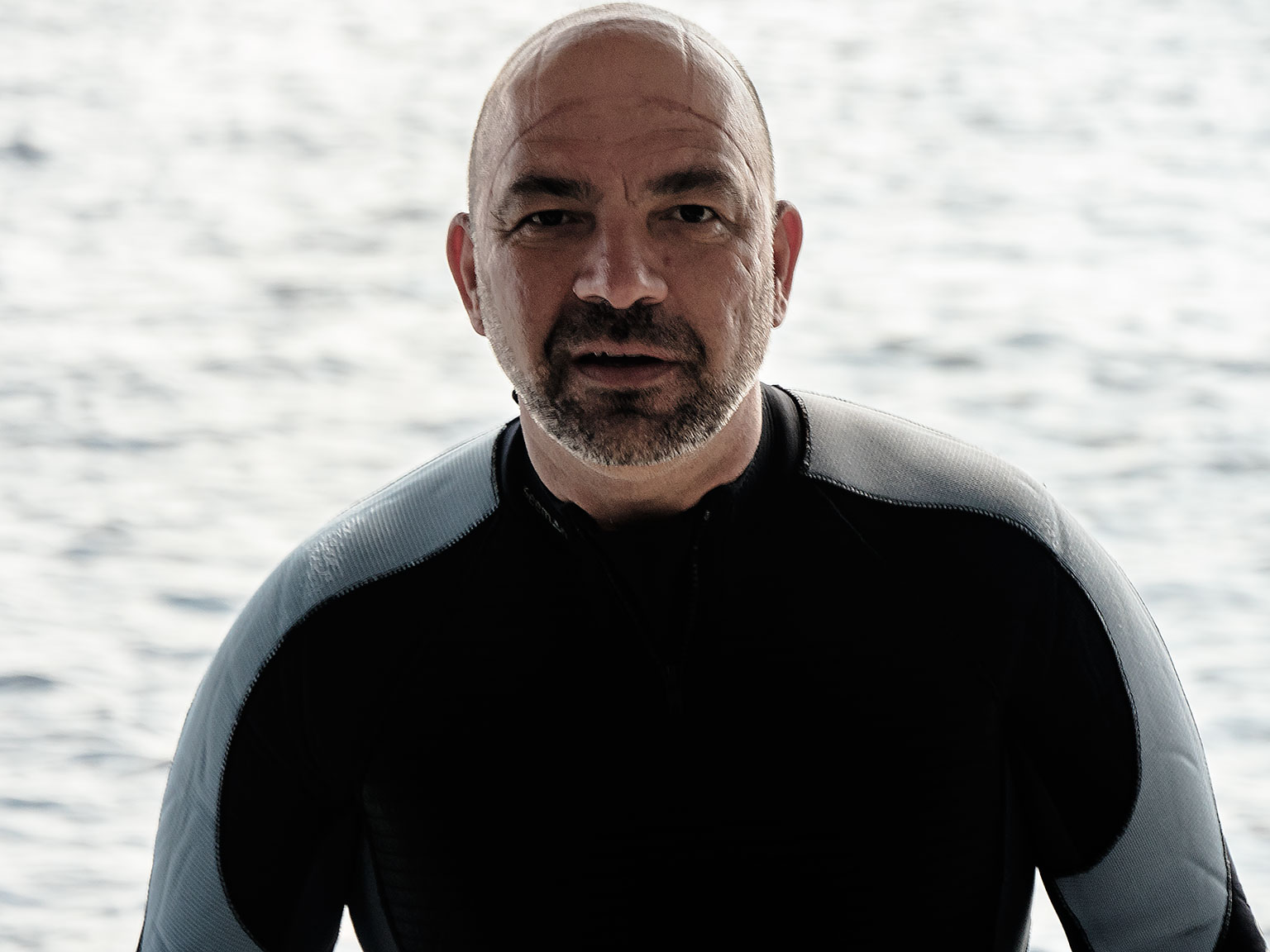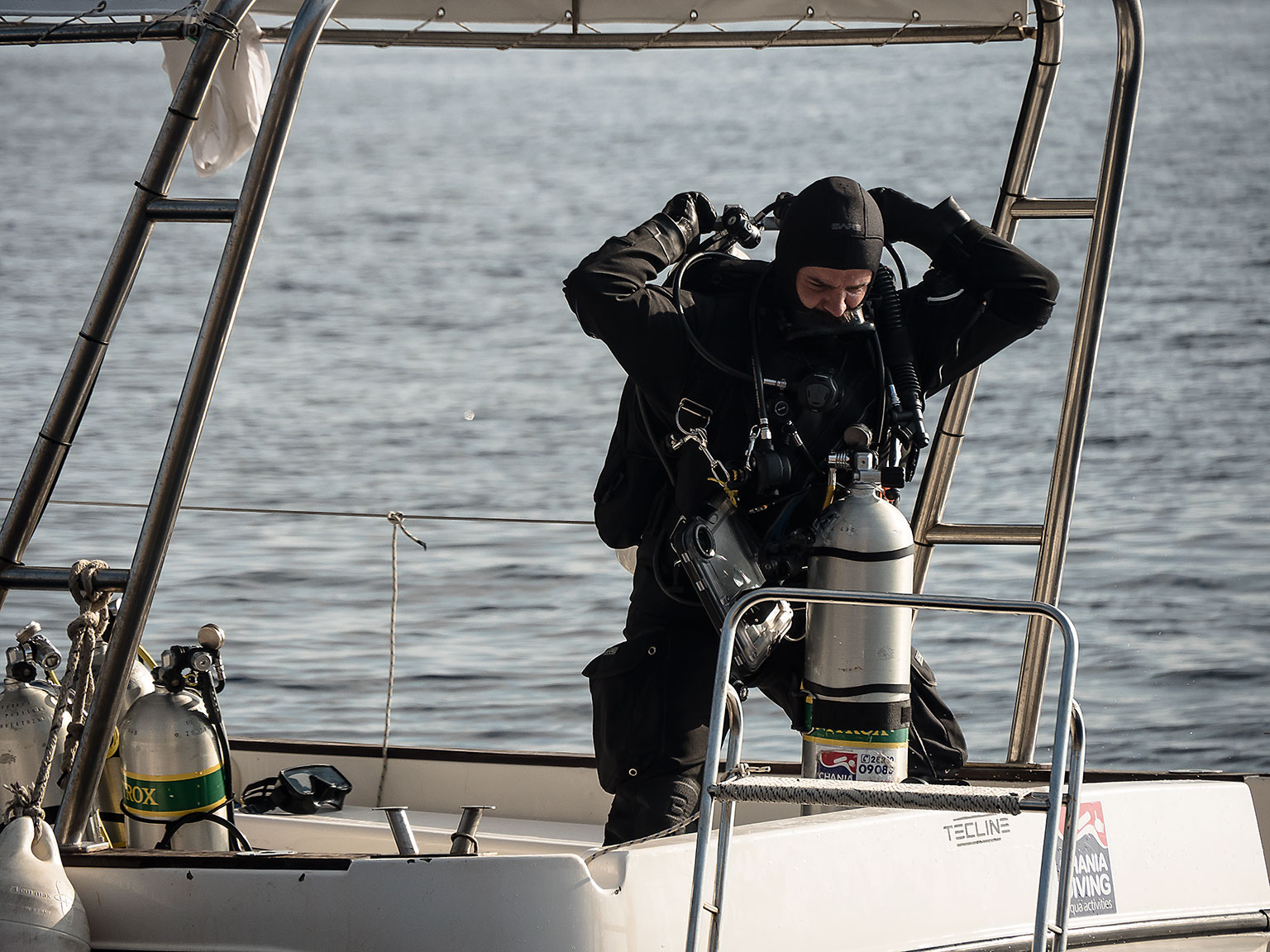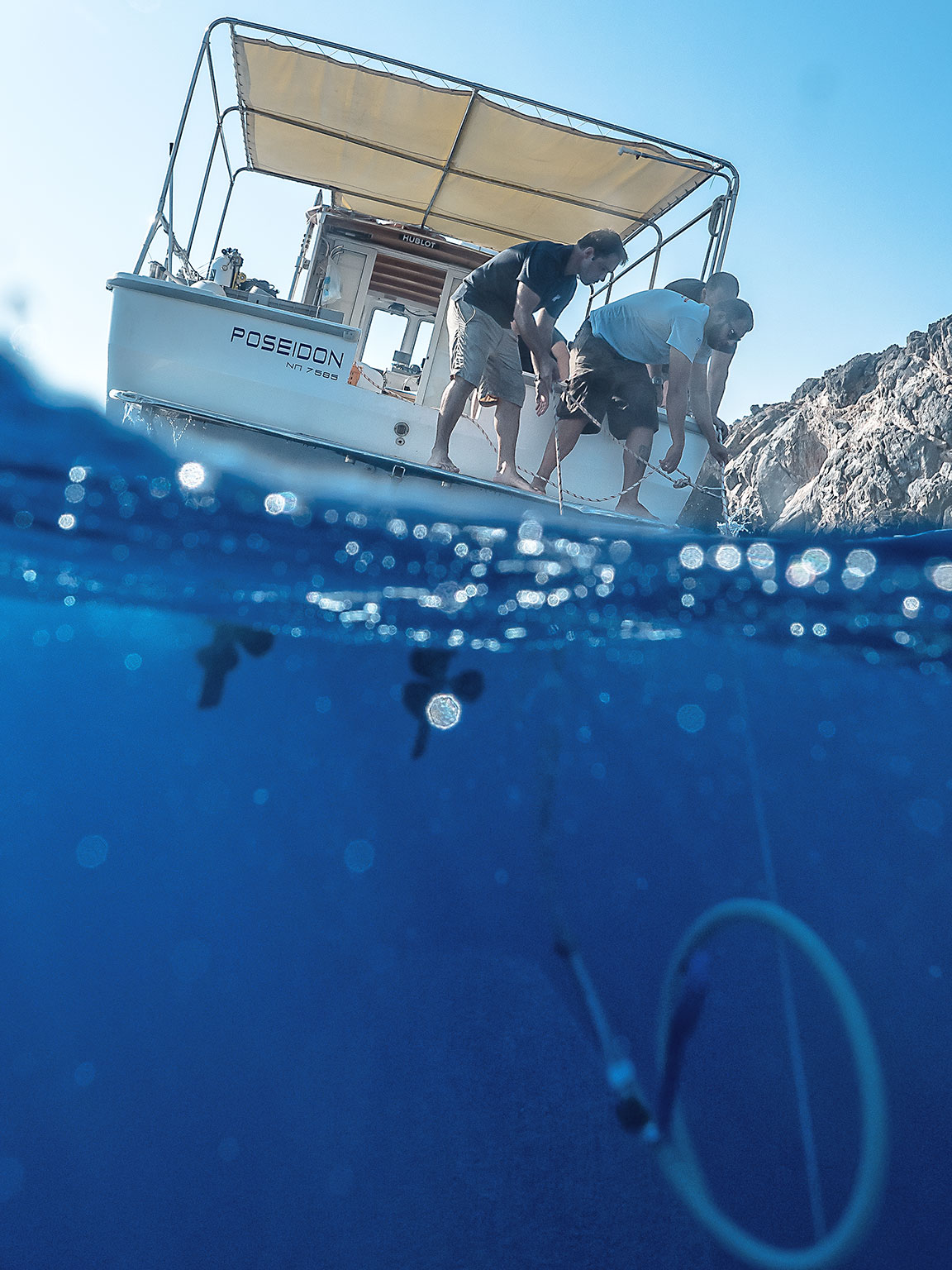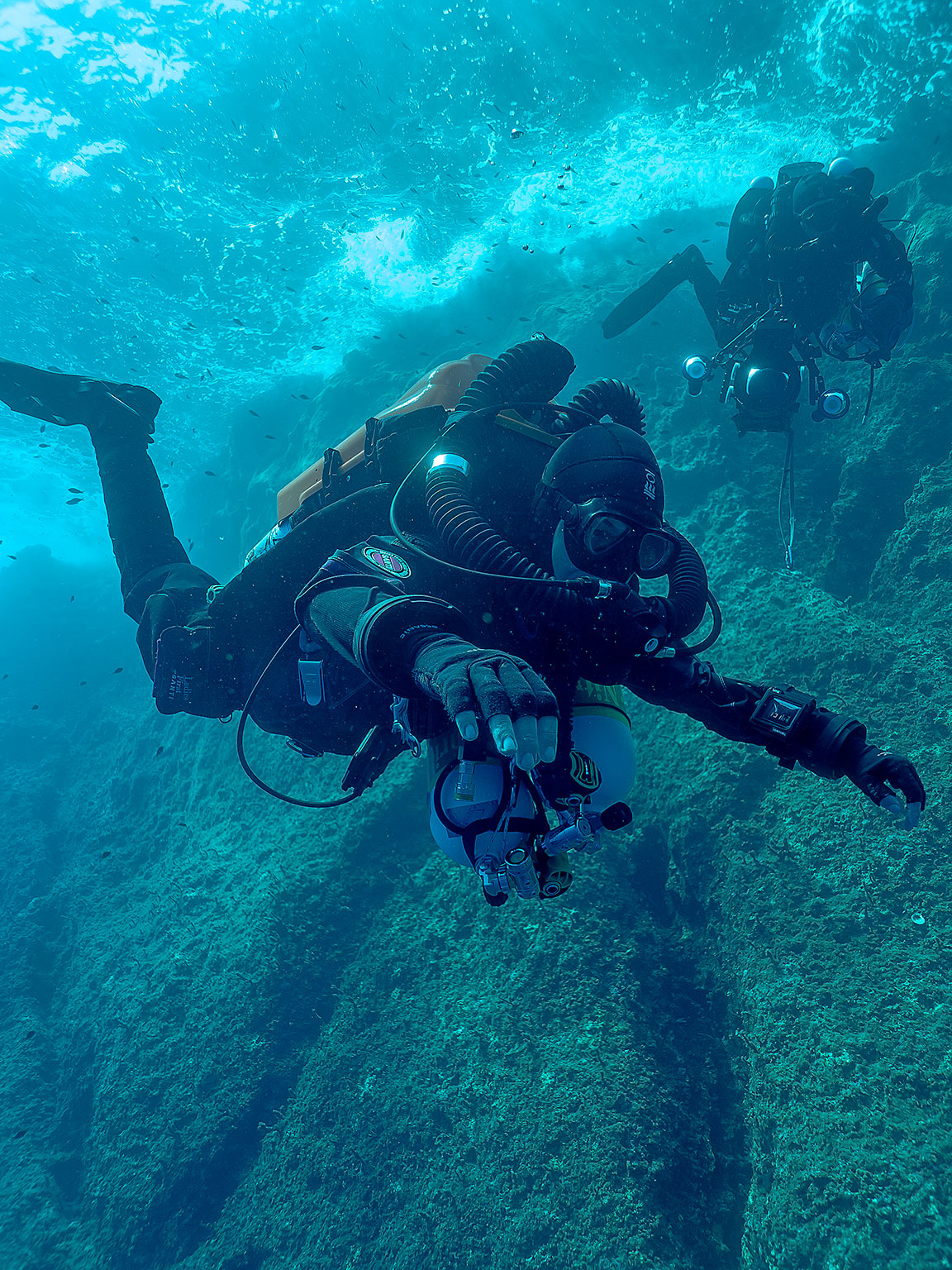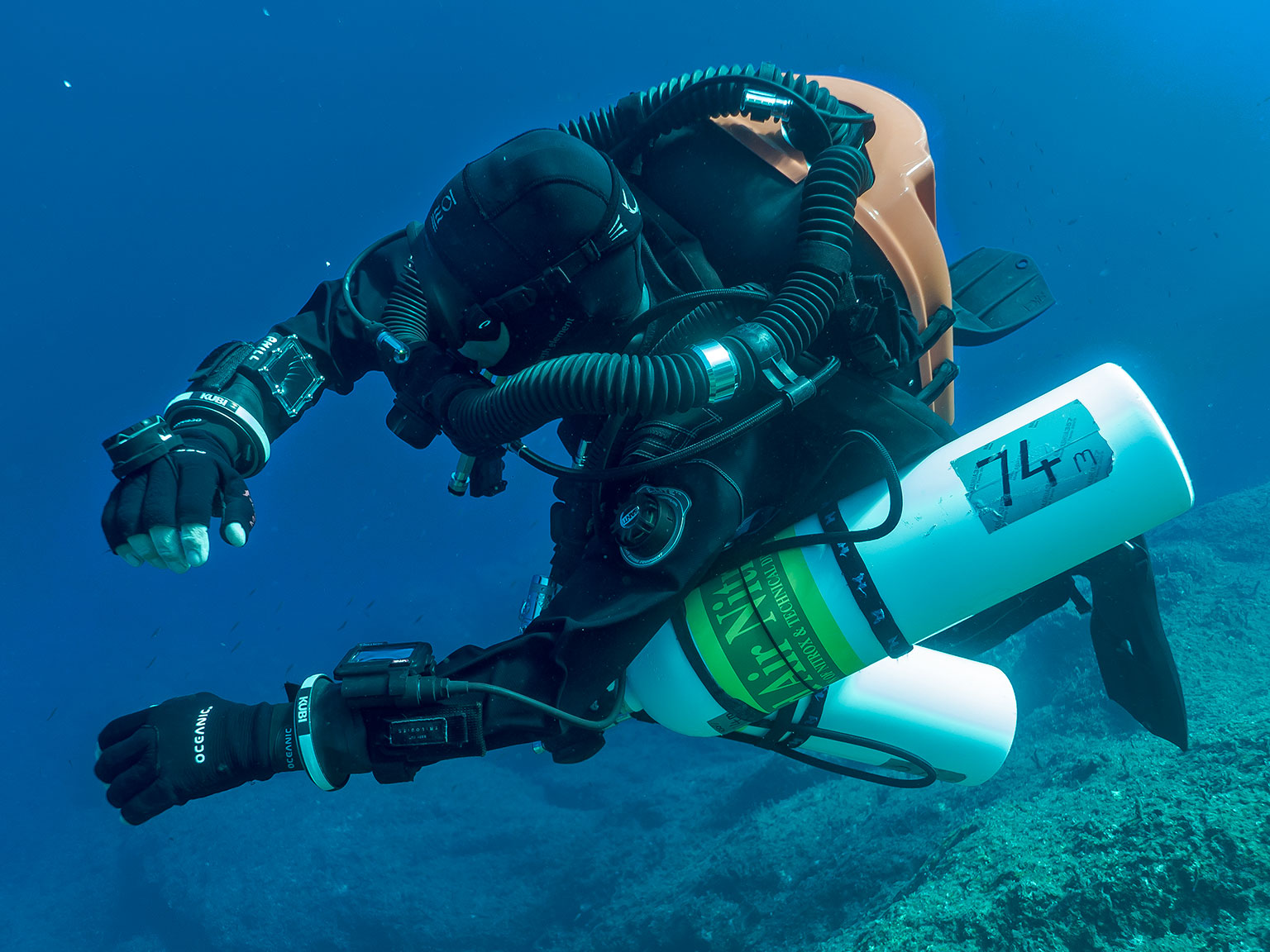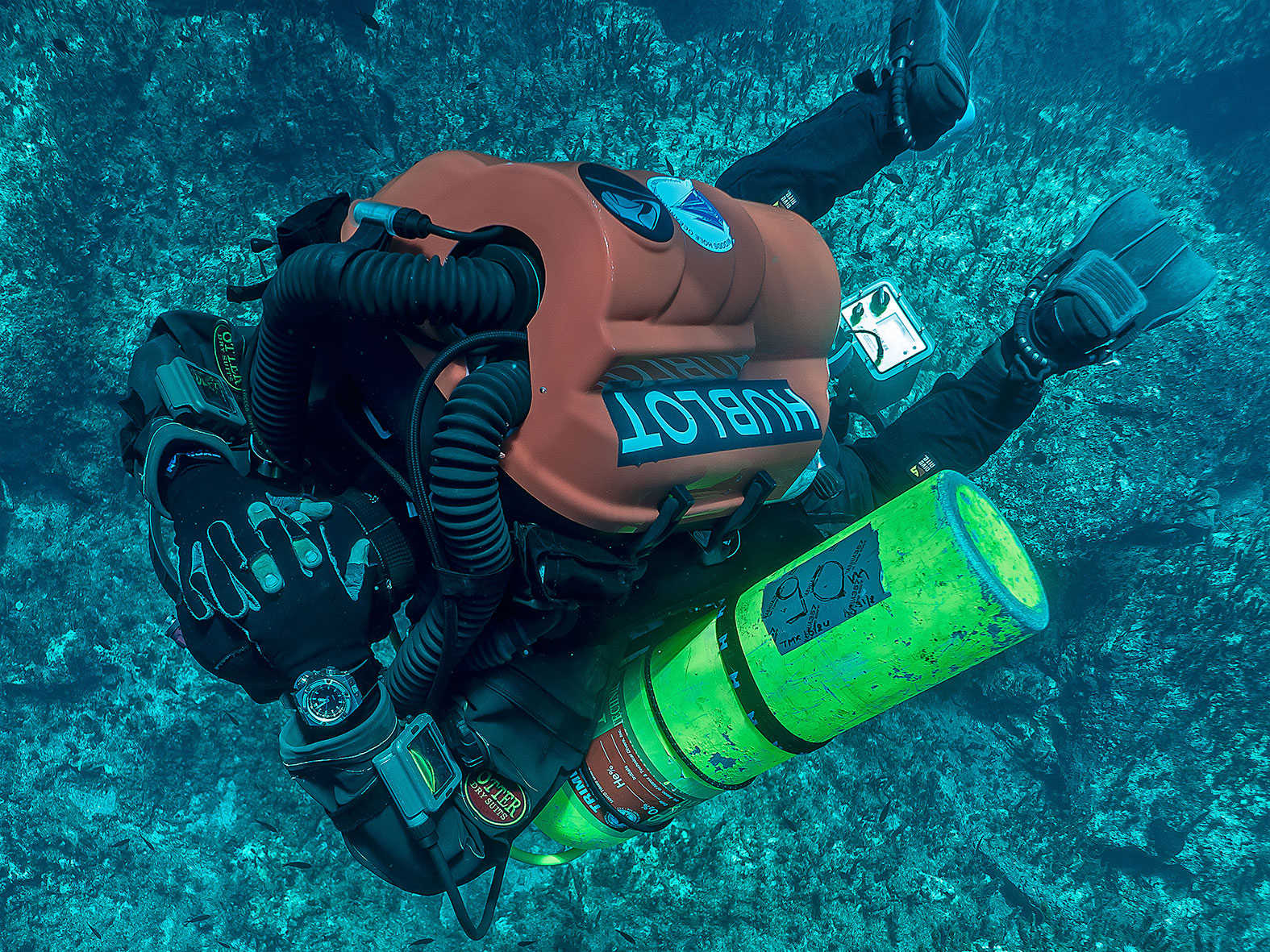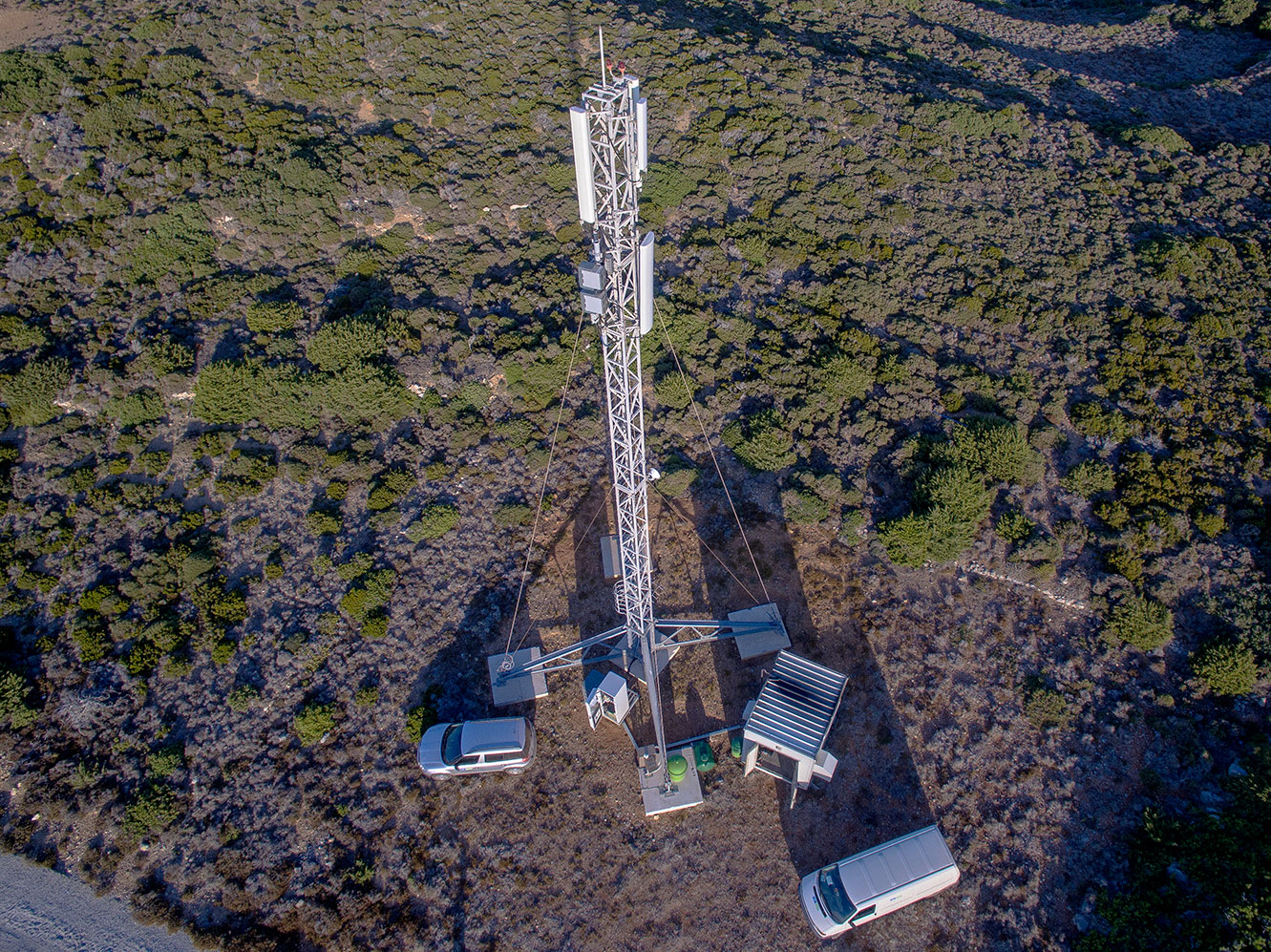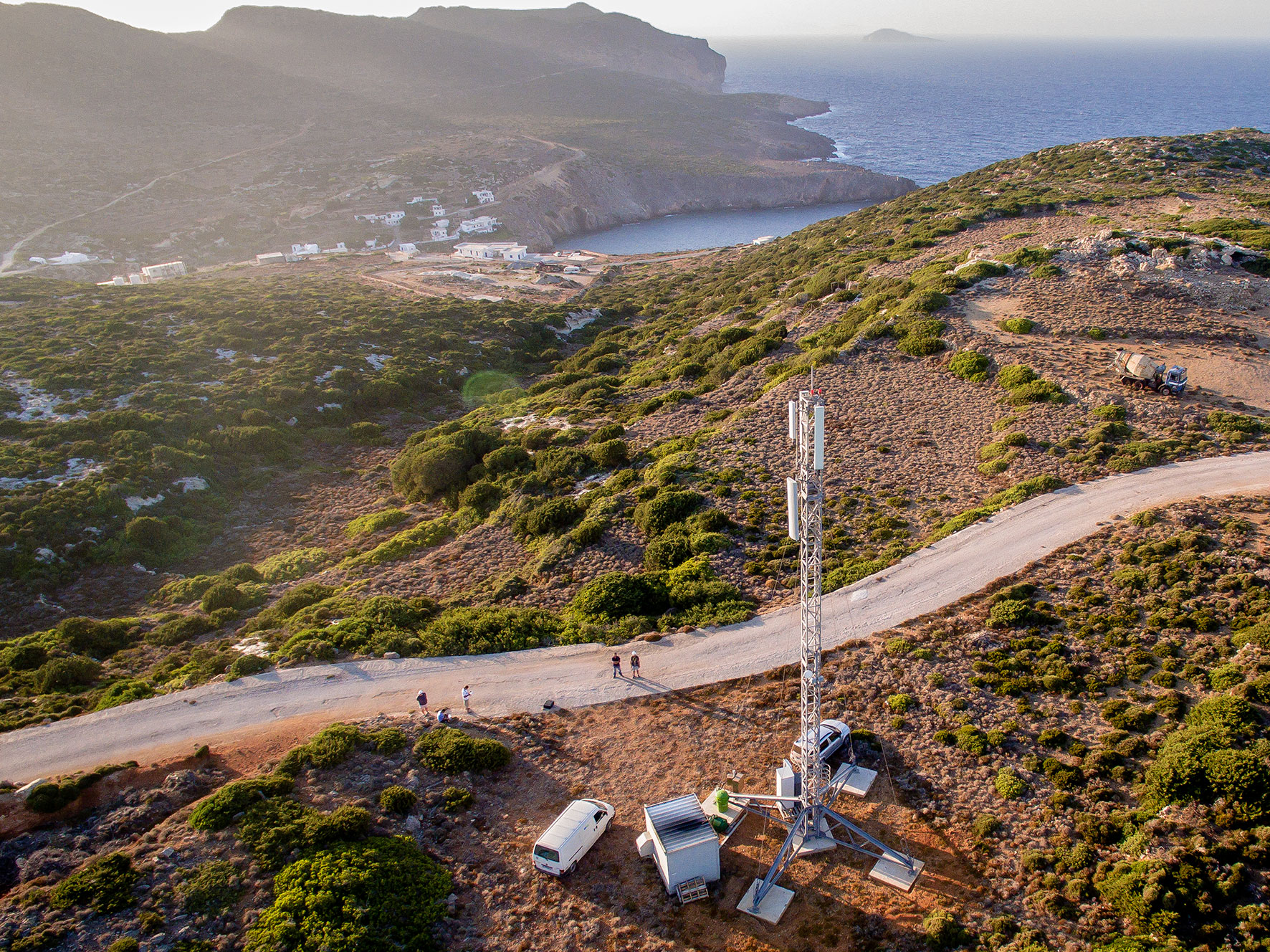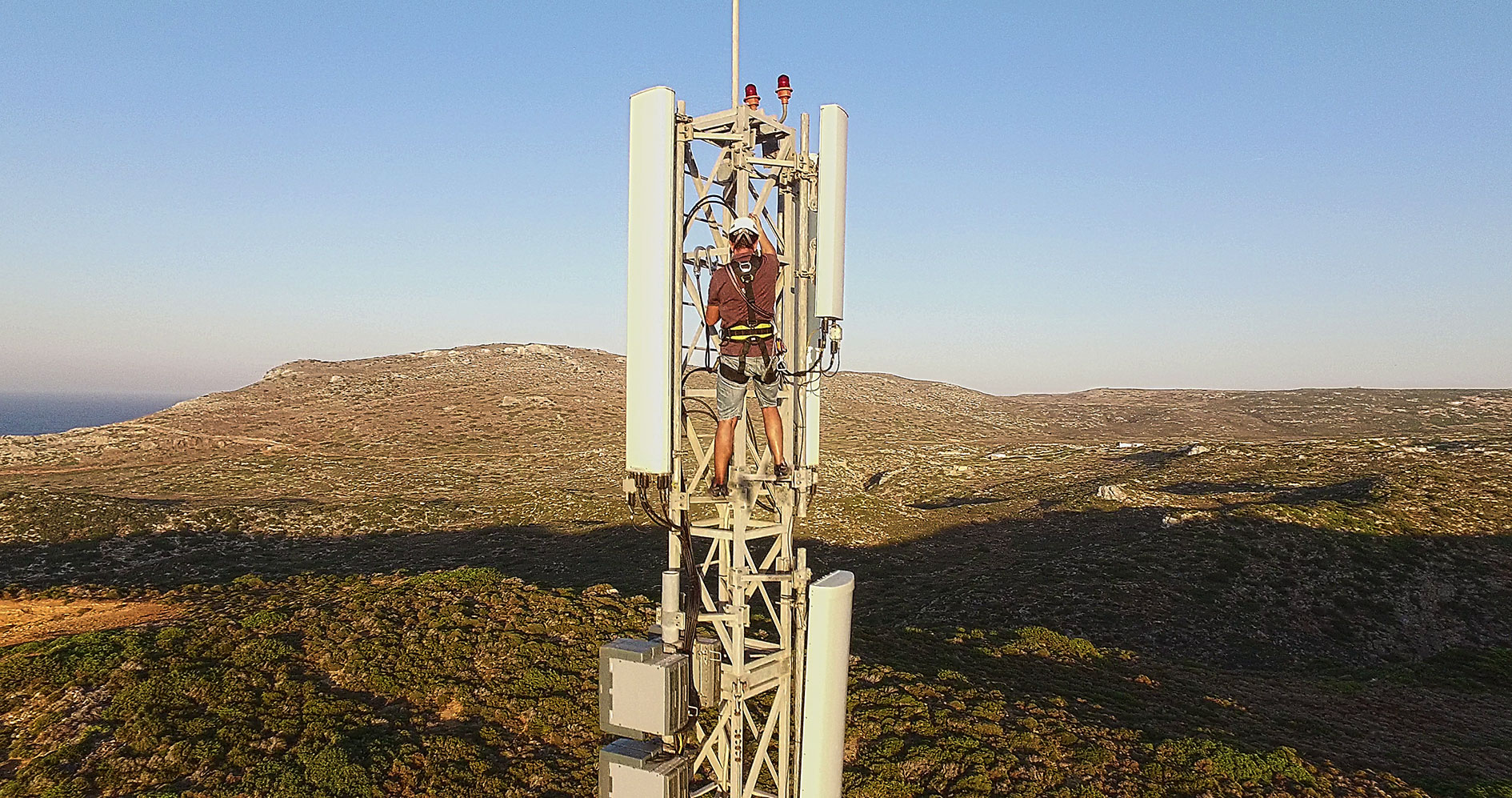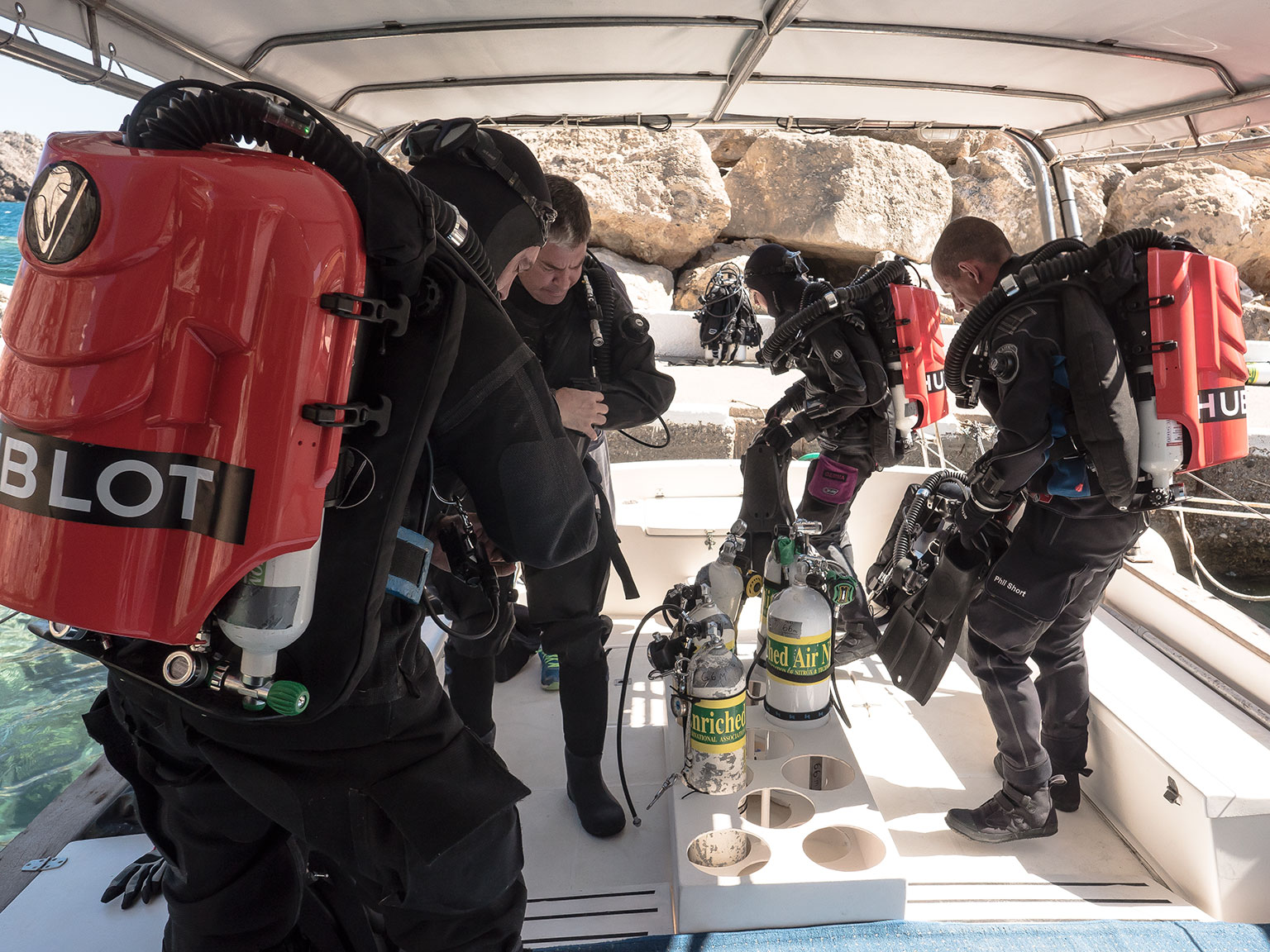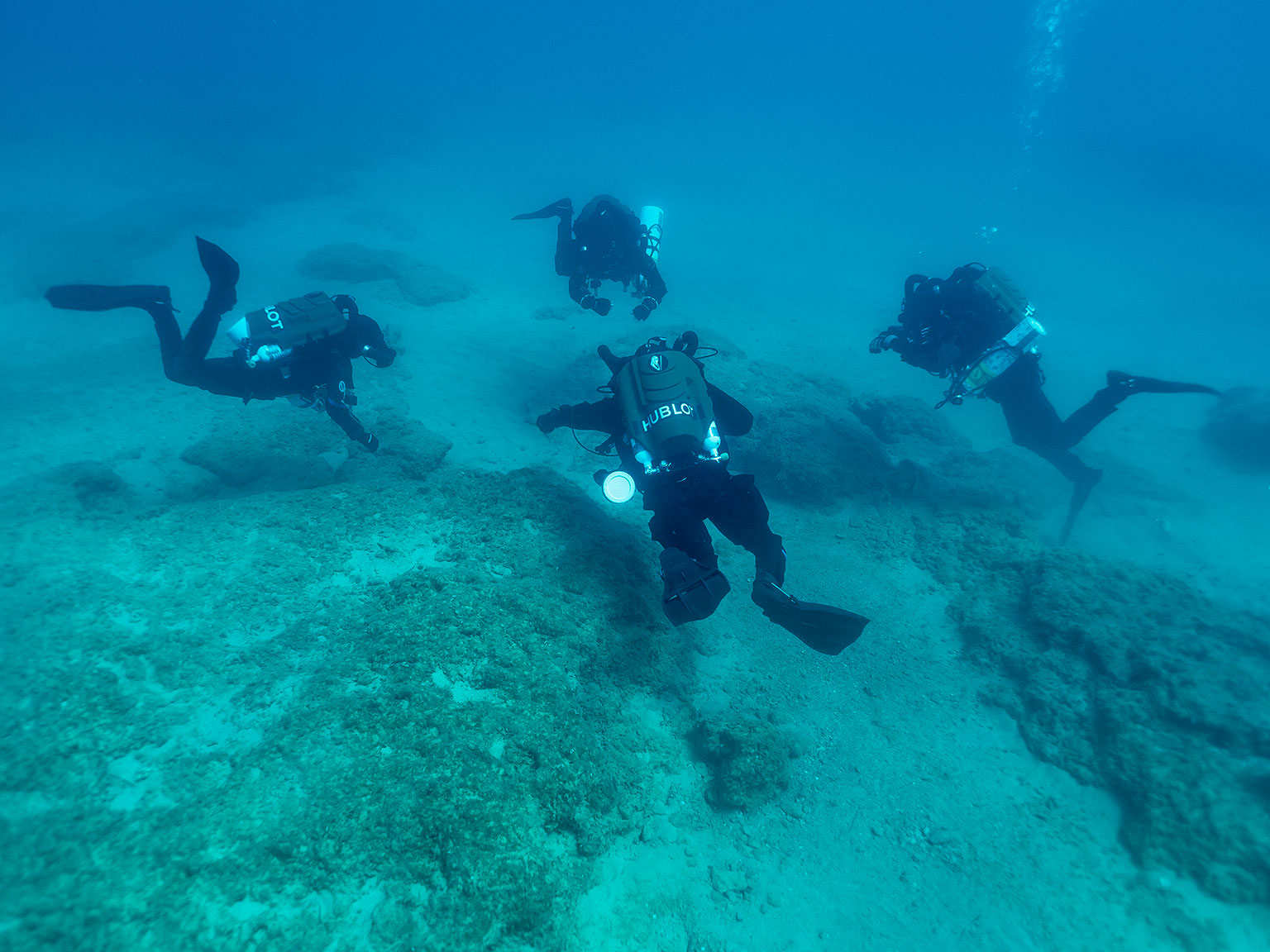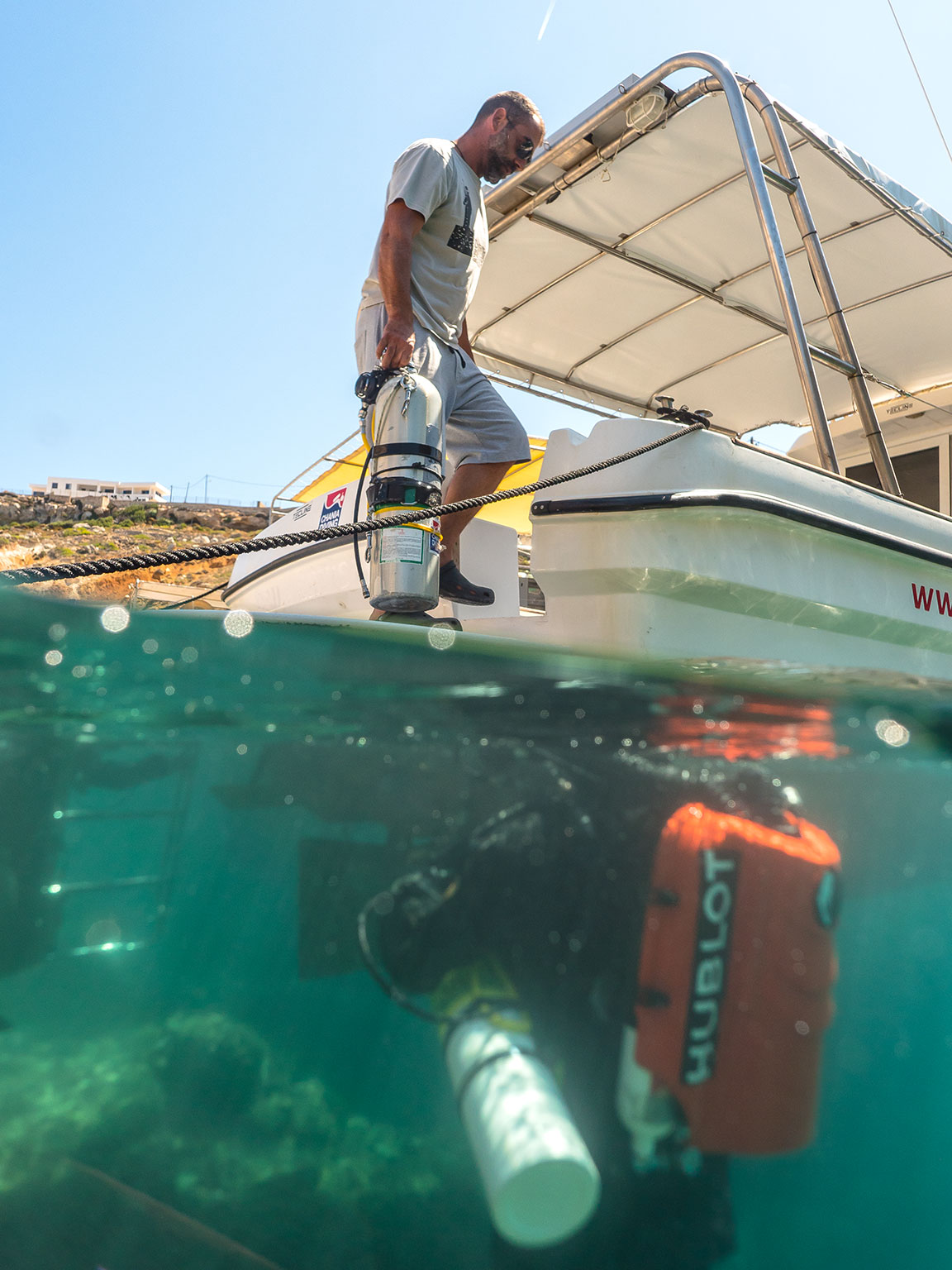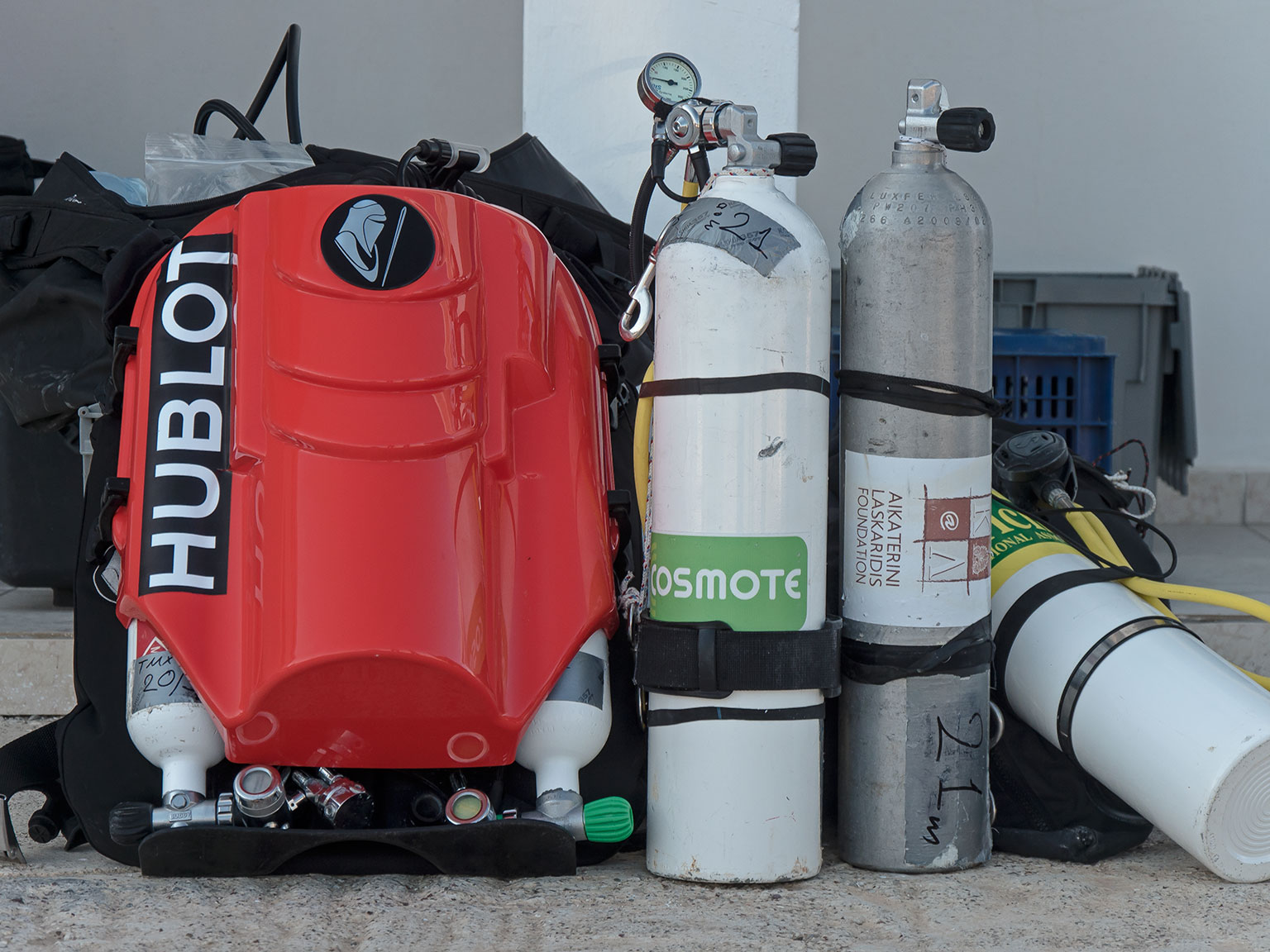Underwater archaeology depends on a wide range of equipment, first and foremost apparatus to breathe underwater, which becomes more challenging at depths below 40 metres. Secondly, gravity is different underwater, meaning that you can’t just remove sand and place it in a wheelbarrow, as with land archaeology. These two topics lead into an explanation regarding equipment being prepared in Antikythera today…
Rebreathers
The majority of divers in the project will be using rebreathers, which are different from standard scuba kit – where exhaled breaths are recycled in a ‘closed circuit’ system, filtered, with a touch of oxygen added, and ‘re’-breathed. This is a lot more efficient than standard Scuba kit, meaning that less breathing gas is needed per diver and optimal breathing gasses can be inhaled.
Divers breathe a special gas mixture, commonly known as Trimix because at depths deeper than 50 metres, a gas mix including helium is better so that some of the nitrogen and oxygen we normally breath in air is removed, because of undesirable properties under greater pressure. Too much nitrogen at depth leads to a phenomena called nitrogen narcosis (aka. raptures of the deep), with similarities to being intoxicated, impairing the diver’s ability to work underwater. Sponge divers who recovered statues and the Antikythera mechanism in the early 1900’s breathing air pumped from the surface would have suffered a lot while working.
Underwater Dredge
Another piece of equipment being prepared today is the underwater dredge, a suction system that will be used to carefully excavate parts of the shipwreck that are buried in the sand. The plan is to set up an underwater grid and create associated trenches, to systematically remove pockets of sand. It could take years to excavate the entire site, so a systematic approach allows work to take place in a modular way. Everything found will then be logged onto a detailed map/chart, to indicate the spatial relationship between items recovered.
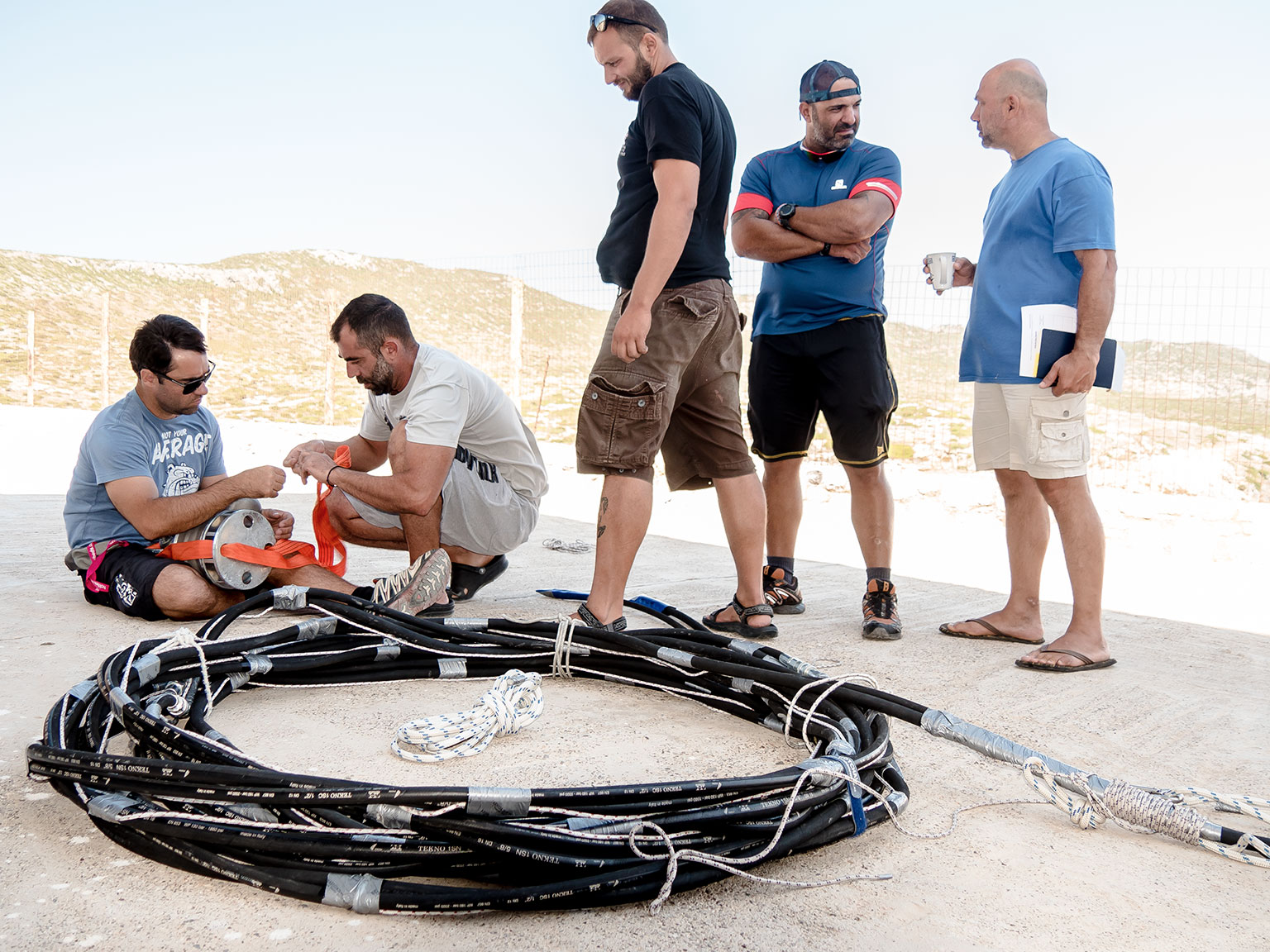
Preparing the underwater dredge.
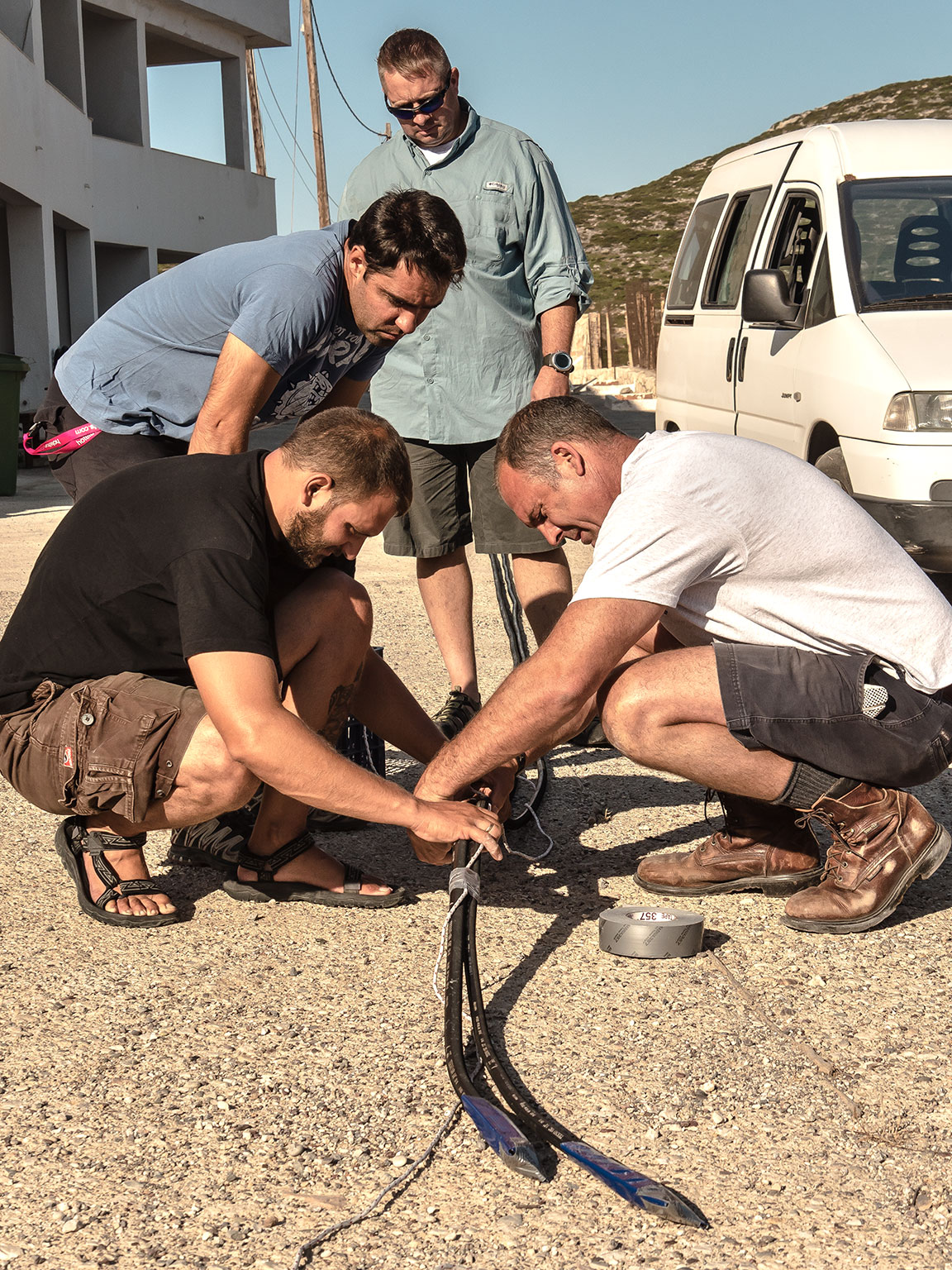
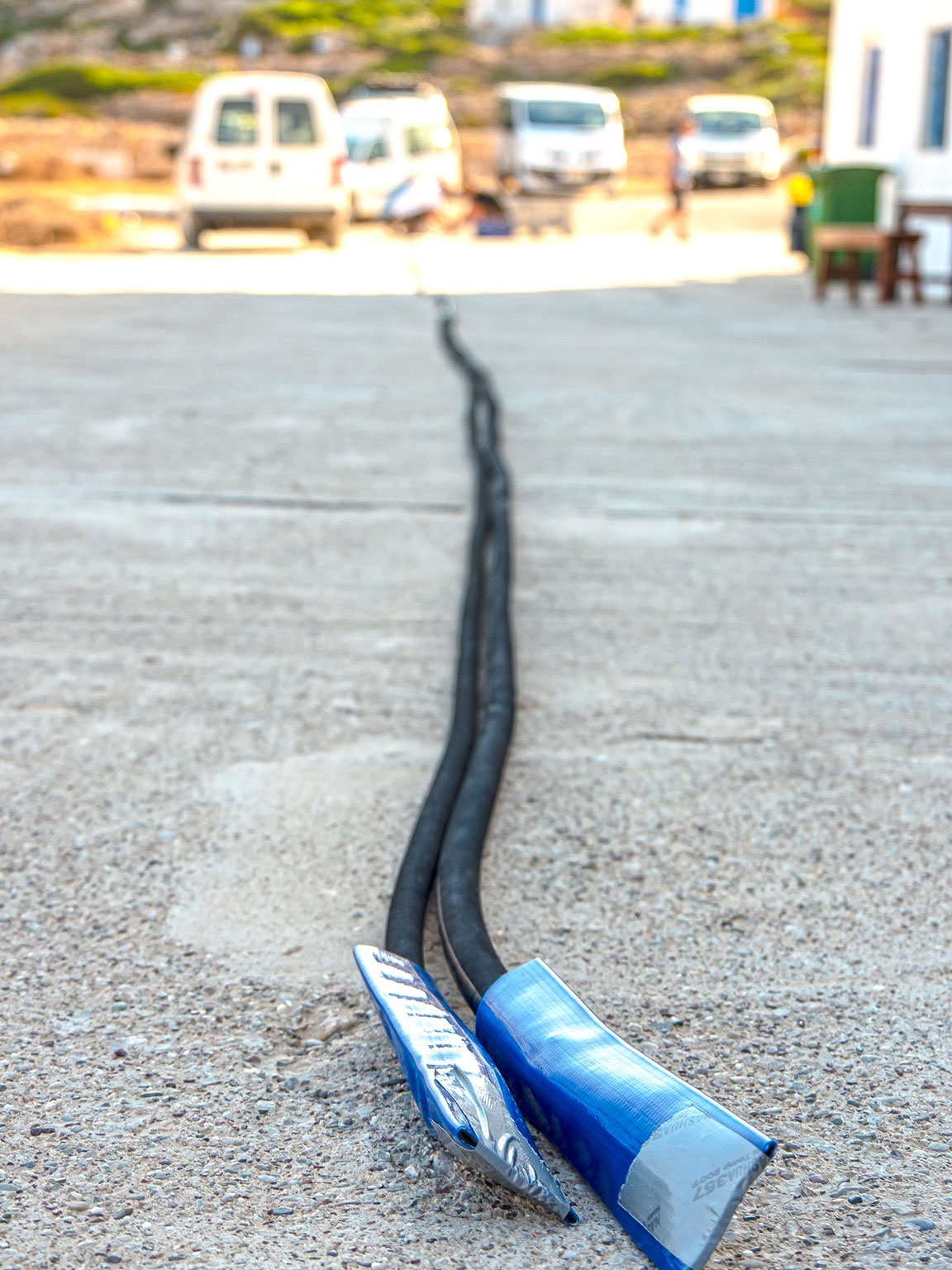
Over 70 metres of hoses are needed for the underwater dredge.

This is the VMS Sentinal rebreather that most of the team is using.
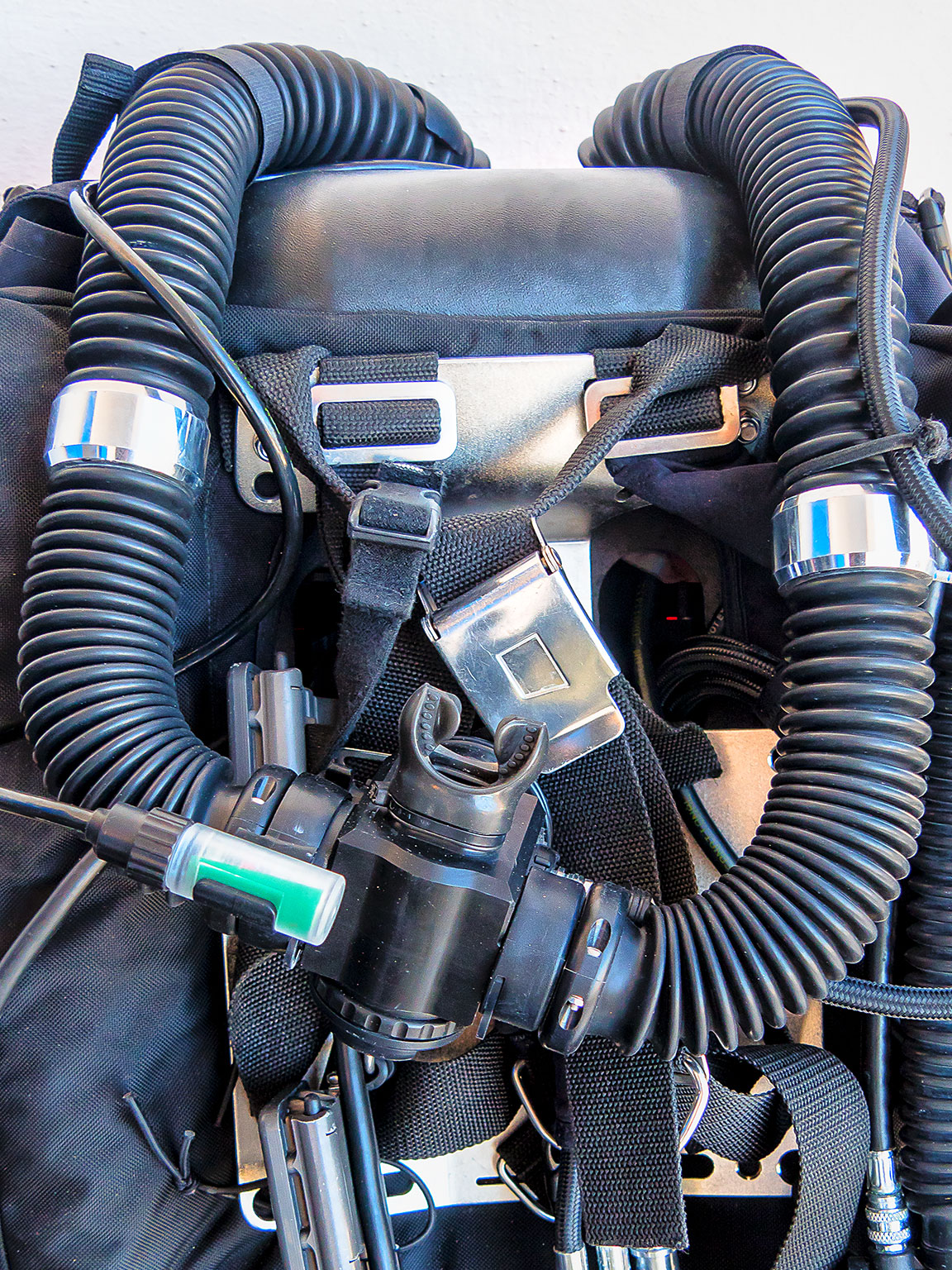
Notice the twin hoses connected to the mouth piece in the middle. Gas breathed comes in from one hose, and is exhaled and ‘recycled’ through the other.

And a view of the twin hoses from the other side, with the mouth piece that the diver breathes through, in the centre. The clear cylindrical object at the top right displays warning and status lights throughout the dive.


